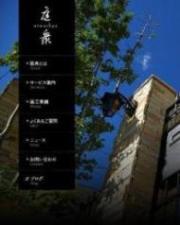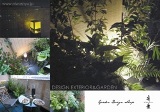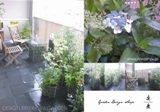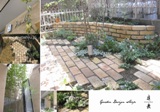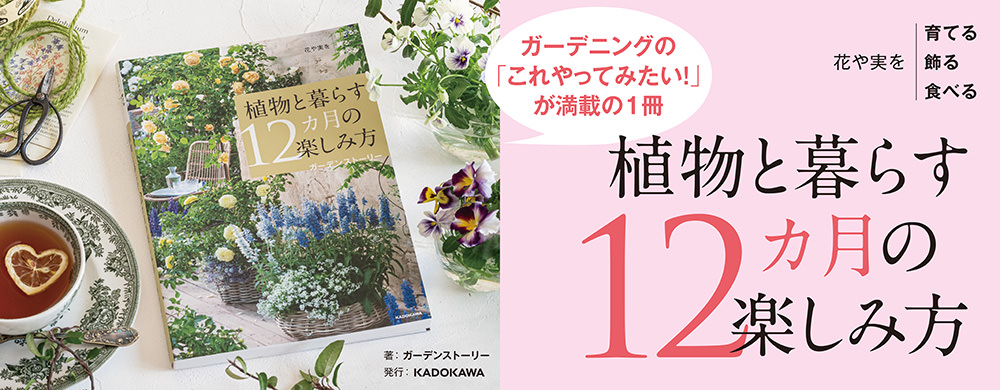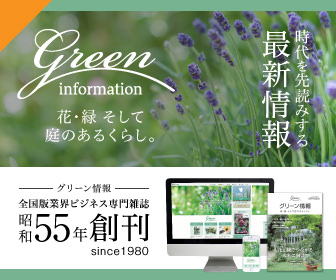My first few weeks at Niwashyu as an intern
テーマ:“日記”
2015/11/05 17:57
とても面白い!(...Or very interesting!) I have been initiated into a very hard working team, with a friendly, positive and determined attitude towards work. I began my internship by learning how to do the landscape design drawings of birds-eye and perspective views for clients. I love to draw, so this was a great start and something I look forward to doing more of.
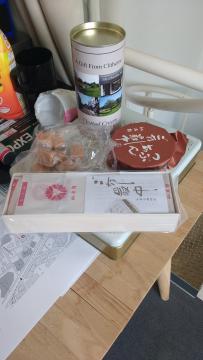
English clotted cream gifts meet Japanese adzuki bean sweets!
Since then, I have been getting my hands covered in my favourite stuff – soil! The maintenance work has been physically tough (no exercise needed in the evening / weekend!) But it keeps you fit and there's always an美味しい (tasty) lunch! During this work, I’ve had the chance to help choose plants, giving me an awareness of the seasonality of this work and the species available for city dwellers to grow. I have enjoyed meeting each of Niwashyu’s clients thus far, and learning about their preferences for garden plants. I have noted there is a general liking of low maintenance evergreens and subtle colours. Additionally, there seems to be a preference towards English and contemporary Japanese garden styles, rather than traditional Japanese gardens. I would like to take the opportunity during this blog post to ask Niwashyu clients how wildlife other than plants (for example, birds, bees, insects etc.) are considered in the garden – are these a part of the decisions made when choosing plants?

Arranging flowers chosen from the garden center for a client’s balcony.
Currently, English gardeners are learning more about the importance of wildlife in gardens (both urban and rural), and as a consequence are incorporating more native, bee friendly flowers into garden designs. This recent development in garden design has been inspired by a greater awareness of global bee population decline due to loss of food and living space from farming and urban expansion. Is this something that modern Japanese gardens will also adapt?
Something that may be of inspiration to Tokyo gardeners is some of the leading work already happening in 銀座 (Ginza) - http://www.thinktheearth.net/thinkdaily/report/2010/10/rpt-54.html#page-3
More information about the importance of using bee friendly plants can be seen here - https://www.rhs.org.uk/science/conservation-biodiversity/wildlife/encourage-wildlife-to-your-garden/plants-for-pollinators
So, it’s been a busy first few weeks, but highly productive and educational! I’m looking forward to the rest of my time here, meeting more clients and understanding what they want from their urban gardens.
Jasmine

English clotted cream gifts meet Japanese adzuki bean sweets!
Since then, I have been getting my hands covered in my favourite stuff – soil! The maintenance work has been physically tough (no exercise needed in the evening / weekend!) But it keeps you fit and there's always an美味しい (tasty) lunch! During this work, I’ve had the chance to help choose plants, giving me an awareness of the seasonality of this work and the species available for city dwellers to grow. I have enjoyed meeting each of Niwashyu’s clients thus far, and learning about their preferences for garden plants. I have noted there is a general liking of low maintenance evergreens and subtle colours. Additionally, there seems to be a preference towards English and contemporary Japanese garden styles, rather than traditional Japanese gardens. I would like to take the opportunity during this blog post to ask Niwashyu clients how wildlife other than plants (for example, birds, bees, insects etc.) are considered in the garden – are these a part of the decisions made when choosing plants?

Arranging flowers chosen from the garden center for a client’s balcony.
Currently, English gardeners are learning more about the importance of wildlife in gardens (both urban and rural), and as a consequence are incorporating more native, bee friendly flowers into garden designs. This recent development in garden design has been inspired by a greater awareness of global bee population decline due to loss of food and living space from farming and urban expansion. Is this something that modern Japanese gardens will also adapt?
Something that may be of inspiration to Tokyo gardeners is some of the leading work already happening in 銀座 (Ginza) - http://www.thinktheearth.net/thinkdaily/report/2010/10/rpt-54.html#page-3
More information about the importance of using bee friendly plants can be seen here - https://www.rhs.org.uk/science/conservation-biodiversity/wildlife/encourage-wildlife-to-your-garden/plants-for-pollinators
So, it’s been a busy first few weeks, but highly productive and educational! I’m looking forward to the rest of my time here, meeting more clients and understanding what they want from their urban gardens.
Jasmine
コメント
トラックバック
この記事のトラックバック URL :
http://blog.niwablo.jp/niwashyu-blog/trackback/204085
http://blog.niwablo.jp/niwashyu-blog/trackback/204085


